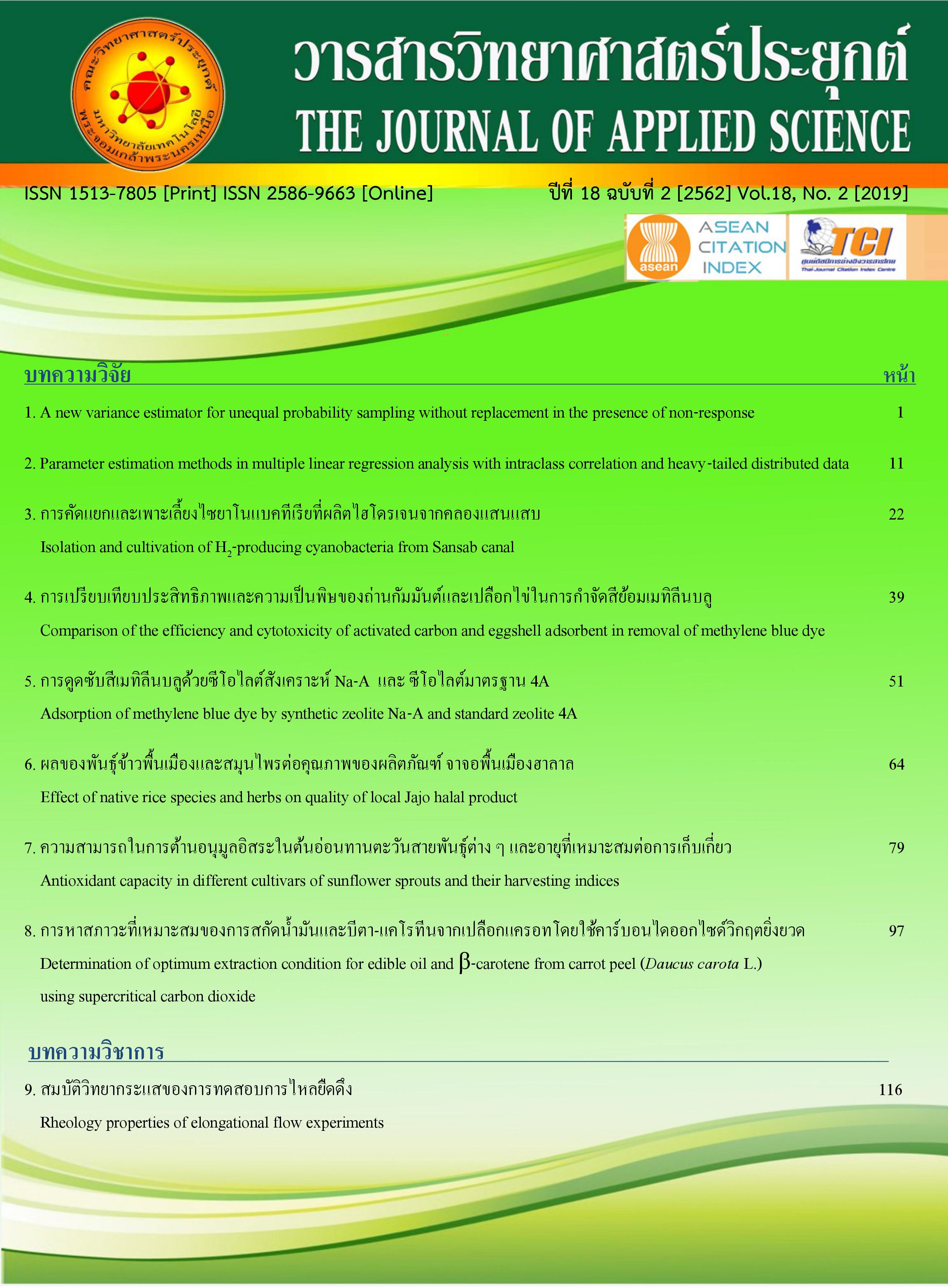Comparison of the efficiency and cytotoxicity of activated carbon and eggshell adsorbent in removal of methylene blue dye
Keywords:
carbon, cytotoxicity, dye, eggshell, histophatologyAbstract
Currently, dyeing is used very well because there are many benefits. But every thing has both advantages and disadvantages. These dyes are also dangerous, such as carcinogens, can cause serious harm to aquatic organisms and consumers. The removal of dyes into water sources without treatment affects human and animals, and negatively affecting the environment. Therefore, it is necessary to find a way to treat the water that has been contaminated before being released into the water source. The agricultural waste materials as adsorbents, such as eggshell, is a good choice because of the low cost, easy to find, household use and waste materials. This research would like to compare the adsorption of methylene blue dye with the activated carbon, which is a material that has good color absorption, but the process of producing activated carbon resulting in pollution, causing global warming due to greenhouse gas emissions. To compare the efficiency of eggshell and activated carbon by measurement the amount of methylene blue dye by UV-Visible spectrophotometer, and analysis the toxicity test using brine shrimp via histopathology technique. It was found that the eggshell can be used as an adsorbent for methylene blue dye as well as activated activated carbon, but must be used in greater quantities. The use of the eggshell as a dye absorbing does not cause cytotoxicity than activated carbon. Eggshell is another good alternative for water treatment.


